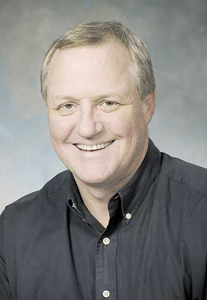Editorial
Front Page - Friday, April 16, 2010
Are We There Yet?
Amen corner
Jay Edwards

Watching the Masters last weekend took me back, as it does every year, to 1999. Hard to believe it was a Sunday 11 years ago when I sat in a foldout green chair and ate a pimento cheese sandwich behind the tee box of the 12th hole at Augusta National.
We had staked our claim on the first row just behind the ropes, where star players came close enough to touch. It was the second day of a dream weekend – perfect weather on the hallowed grounds – where we witnessed the last Masters of the 20th century.
David Duval had just become number one in the world on March 28 that year, a ranking he would hold until July 4, when Tiger took it away from him. Woods held the top spot for just five weeks when Duval got it back. But he could keep it for only a week until Tiger got it back again. Woods didn’t relinquish it that time until September 4, 2004 – after 264 consecutive weeks, a record only he is likely to break.
Getting to see Augusta National at tournament time is every golfer’s dream, probably only surpassed by actually getting to play the historic course.
We had chosen to sit at “Amen Corner” on the last day, after much debate the night before.
The name was first coined in a 1958 Sports Illustrated article by Herbert Warren Wind, who wrote that it was composed of the second half of hole No. 11, all of No. 12 and the first half of hole No. 13. The author was searching for an appropriate name for the location where the critical action had taken place that year. He borrowed the name from an old jazz recording, “Shoutin’ in that Amen Corner.”
Back in 1958, heavy rains soaked the course. For Sunday’s round, a local rule was adopted allowing a player whose ball was embedded to lift and drop it without penalty. On No. 12, Arnold Palmer hit his ball over the green and the ball embedded in the steep bank behind it. Being uncertain about the applicability of the local rule, the official on the hole and Palmer agreed that the ball should be played as it lay and that Palmer could play a second ball, which he dropped. Palmer holed out for a 5 with the original ball and a 3 with the second ball. The committee was asked to decide if the local rule was applicable and if so, which score should count.
At No. 13, still unsure of what his score was at 12, Palmer sank an 18-foot putt for eagle. When he was playing No. 15, Palmer was told his drop at 12 was proper and that his score on the hole was 3, leading to his first major victory.
I left my chair to walk up to a spot in the pines near the crest of the dogleg on 13, where I waited for John Daly to hit his drive. Nearby were two Oriental gentlemen with large cameras around their necks.
We watched as big John came up to the tee. He threw down a cigarette, took a couple of big looping practice swings and blasted a high shot that didn’t draw. It crashed into the trees about twenty yards from where I stood. hole at Augusta National.
“Nakata!” said one of the fans next to me, as he wildly shot pictures in Daly’s direction. The other man looked back to the tee with a serious scowl and seemed to agree with his companion’s assessment.
I wondered what the word meant and imagined things like trees, out of bounds, or a slew of expletives. But later I looked it up and found out it’s a Japanese surname. So one of those guys must have been named Nakata, and the other one was just trying to get his attention.
Late in the day we were back in our chairs watching the leaders come through. The last two were Jose Maria Olazabal and Greg Norman. It would be the last time Norman would contend at Augusta, and it ended as many others had for him – almost.hole at Augusta National.
We followed the two over to 13 and saw Norman send the crowd into a frenzy with a long putt for eagle. But he was matched by Jose Maria, who made one of his own, on his way to a second Green Jacket.
After the drama at 13 we headed back to the parking lot and got ready for the long drive to the Atlanta Airport. I took one last look at Amen Corner, now empty of spectators and hopeful competitors. The history that had occurred there over the years did not escape me, and now I had my own memories to add to it.
|
|